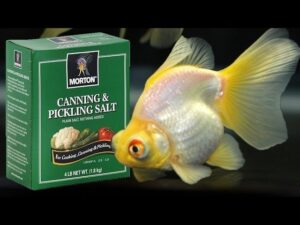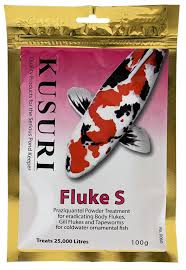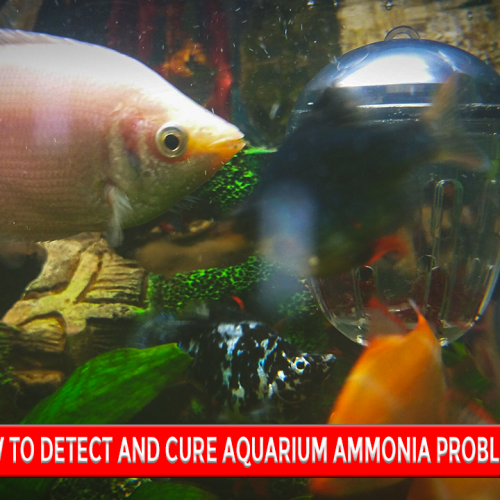Flukes, or monogenean parasites, are quite the common type of parasitic flatworms infecting freshwater and saltwater fish. Invisible to naked-eye observation, they embed onto a fish’s skin, gills, and fins, which causes such drastic health issues if it were not treated. Know more about the signs and treatment options for fluke diseases to keep your fishes in proper health and your tanks parasite-free.
What are flukes in fish?
Flukes are parasitic worms with two main types of types:
- Gill Flukes (Dactylogyrus) – infestation on the gills- affect respiration of fishes
- Skin Flukes (Gyrodactylus) – infests on the skin, fin, or scales and also causes damage to the scales and causes stress.
All these two types may also cause serious health problems through weakening the immune system so that fish become vulnerable for infections from secondary sources.
Causes of Fluke Infections
Flukes are usually carried into the aquarium with either a new fish, new plants, or new equipment bearing this parasite. Flukes are prolific breeders under warmth and in a crowded aquatic with heavy organic waste; such causes of infestations commonly arise from the following :
- Aquariums with badly infested fish or aquatic plants brought into the place without quarantine
- Poor condition of water due to non-changing water or overcrowded space
- Unfavorable aquatic conditions in terms of temperature or pH, so creating stress and low level immunity of the fish end.
Symptoms of Flukes Disease in Fish
Infected fish tend to show several symptoms that characterize this parasitic infection, including the following:
- Gasping at the surface or labored respiration, especially with gill flukes.
- Rubbing or flashing against tank surfaces to relieve irritation.
- Clamped fins and general inactivity.
- Redness or inflammation of gills, fins or body parts.
- An increase in mucus production, often seen as cloudy or slimy appearance over the skin.
Flukes, if left untreated, cause tremendous tissue damage and lead to weight loss and death, especially among young or stressed fish.
Treatment Options for Flukes in Fish
 Salt Baths: Salt can be used in killing flukes without causing harm to the fish. A separate container can be used with a 2-3% salt solution for a short bath. This method is effective, especially for freshwater fish but should be used with care for salt-sensitive species.
Salt Baths: Salt can be used in killing flukes without causing harm to the fish. A separate container can be used with a 2-3% salt solution for a short bath. This method is effective, especially for freshwater fish but should be used with care for salt-sensitive species.
 Medications: Some available antiparasitic drugs include Praziquantel, formalin-based treatments, and copper-based medications, that have shown to be effective against flukes. Dosing should always be strictly according to the manufacturer’s guide since overexposure can kill the fish.
Medications: Some available antiparasitic drugs include Praziquantel, formalin-based treatments, and copper-based medications, that have shown to be effective against flukes. Dosing should always be strictly according to the manufacturer’s guide since overexposure can kill the fish.
Water Quality Improvement: Frequent water changes, observing and controlling parameters of water quality, and cleaning the tank decrease the fish’s stress level and make the environment unfavorable for the parasites.
- Quarantine New Additions: Quarantine new fish, plants, or equipment in the aquarium for at least two weeks before introducing them into the aquarium to prevent flukes.
- Prevention of Flukes in Aquarium
- Prevention of flukes can be initiated by keeping an aquarium with a clean tank environment.
- Quarantine all the new fish and plants before introducing them into the main aquarium.
- Inspect and maintain the aquarium tank water. The water condition should always be such that ammonia, nitrites, and nitrate should remain low.
- Do not overstock the aquarium because crowding in the aquarium makes the fish suffer too much stress, which in turn leads to disease outbreaks in the aquarium.
- Use UV sterilizers if available, for free-swimming parasites in the water can be somewhat controlled.
Conclusion:
Fluke disease is one of the most crucial issues to be known and understood by every fishkeeper. By knowing the symptoms, causes, and effective treatments, it can help in protecting your aquarium from harmful parasites. The best thing is always prevention; that is why you should always quarantine any new additions to your aquarium, maintain great water quality, and if you happen to spot some symptoms of flukes, take quick action. If you have the right care, your aquarium will live a healthy, thriving environment for your fish.
FAQs (frequently-asked questions)
Yes, flukes can certainly spread to many other fish, especially the ones suffering from poor-quality water. Proper quarantine and treatment would prevent an epidemic.
Flukes can survive for a few days without a host, but they will not survive long without fish to feed on. Regular maintenance of the aquarium and quarantine procedures help reduce the possibility of their survival.
Flukes can infect both freshwater and saltwater fish, although there are various types. The freshwater species are more often encountered in home aquaria.
Salt baths are safe for almost all fish but with salt sensitive species like catfish or some species of tropical fish. It is, therefore, essential to research in advance before the treatment.
Yes, if not attended to, flukes lead to severe health complications. It eventually causes an organ failure and even leads to death in fish. Therefore, early detection and treatment are important.




